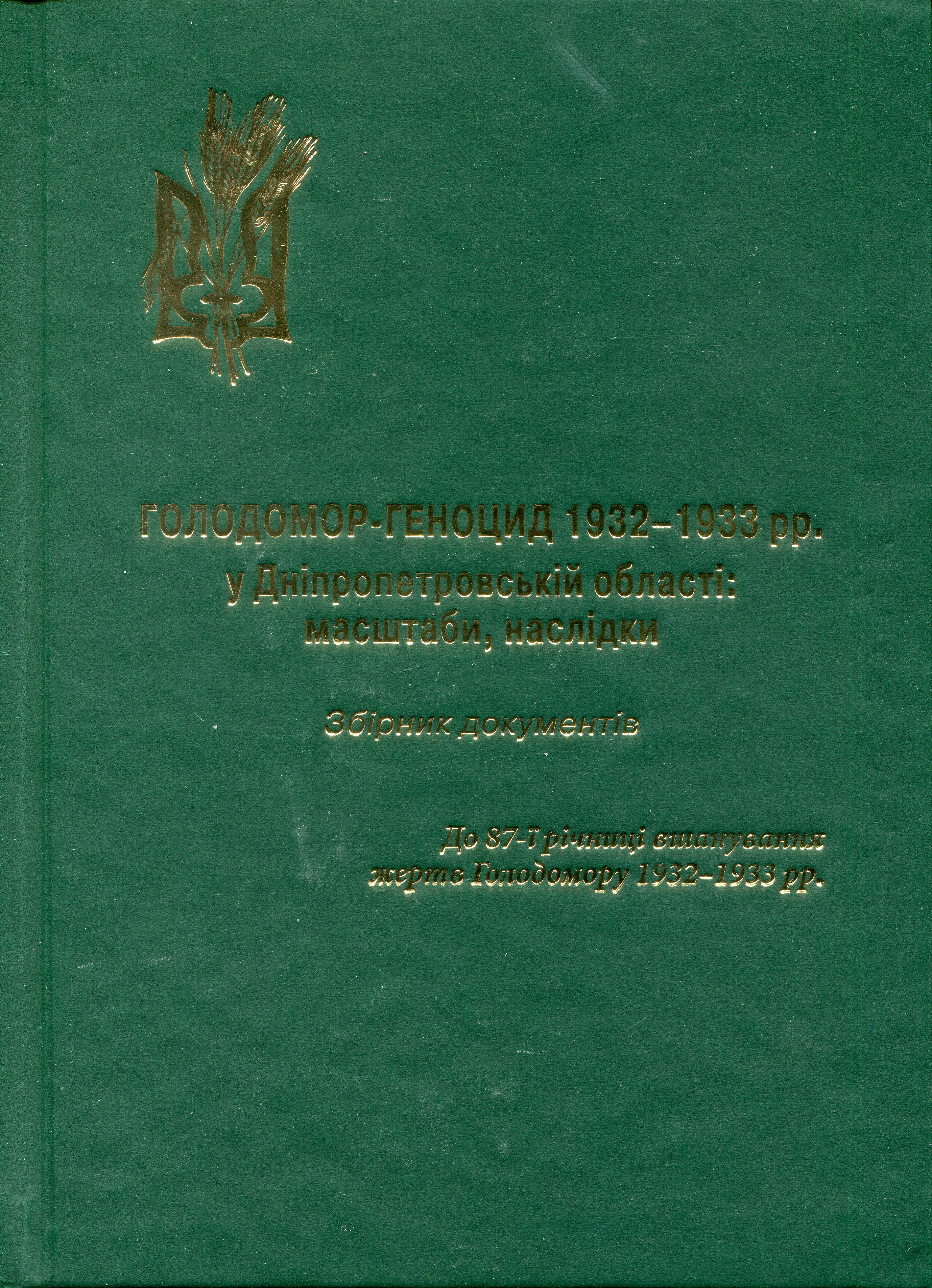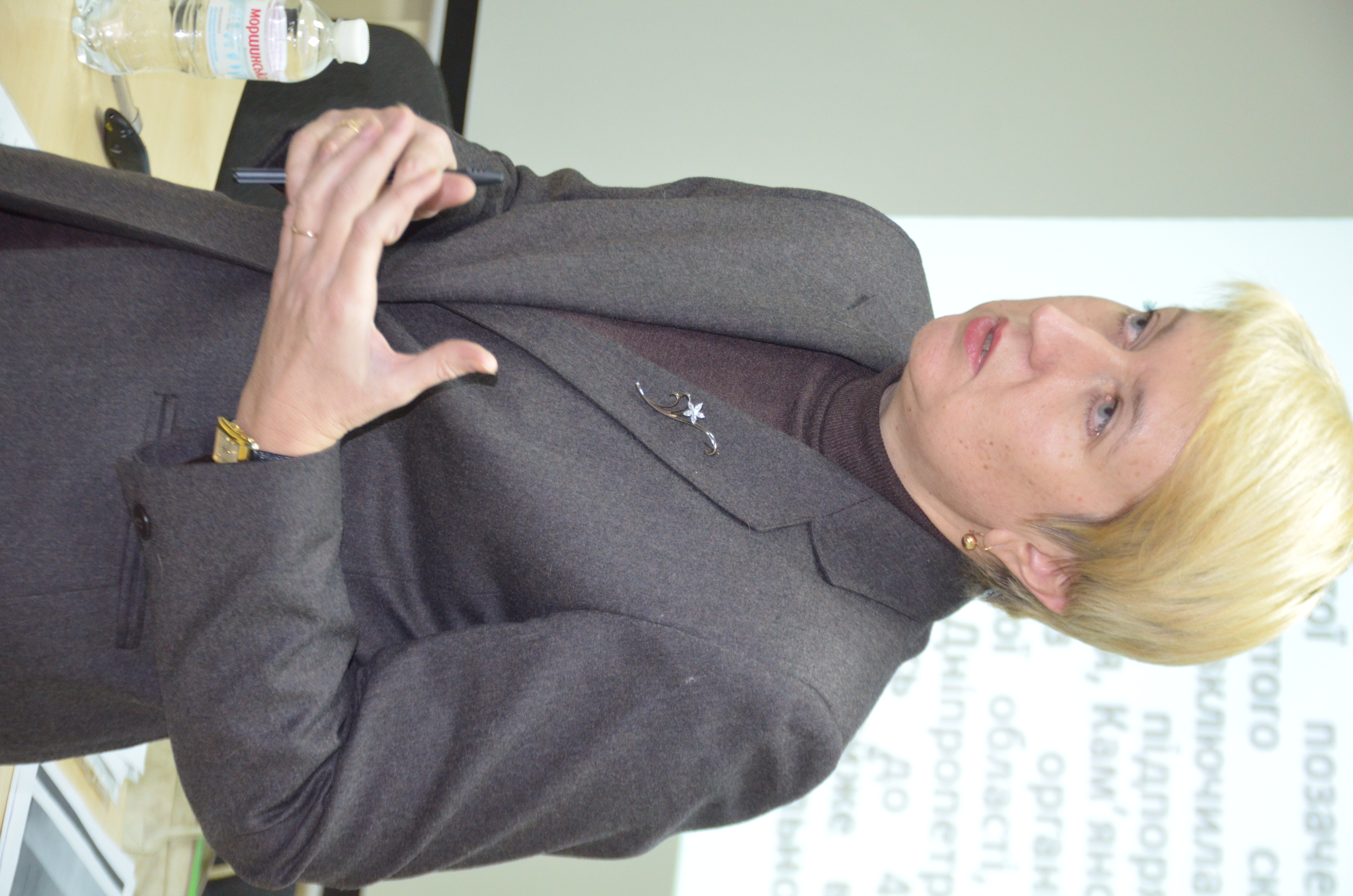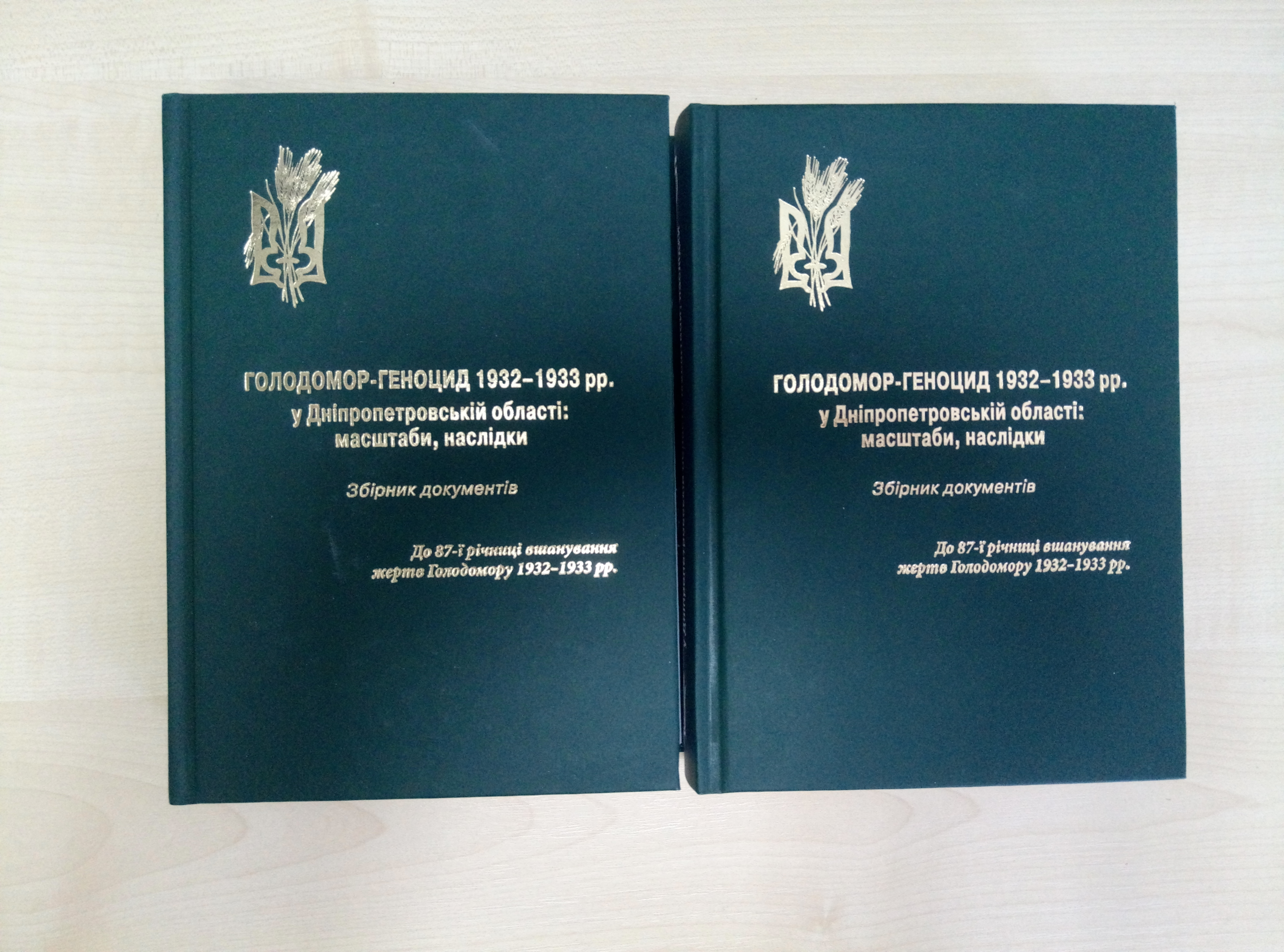Recently, the library of Museum “Jewish Memory and Holocaust in Ukraine” received two copies of the scientific publication.
The Holodomor-genocide of 1932–1933 in the Dnipropetrovsk region: scales, consequences: a collection of documents / ed., comp. & introductory article by N. Romanets. Kyiv: Phoenix PH, 2020.

The National Museum of the Holodomor-Genocide, the Holodomor Research Institute with the Dnipro City Council and the “Holodomor Resistance Museum” have prepared a scientific publication dedicated to one of the most tragic pages in the history of the Ukrainian people of the 20th century. - The Holodomor of 1932–1933. The publication deals with the course of events in the Dnipropetrovsk region in 1932–1933.
The author of the introductory article and the compiler of the collection of documents is Natalia Romanets, Doctor of Historical Sciences, Professor of the Department of History of Ukraine and Law of Kryvyi Rih State Pedagogical University.
Her scientific achievements include more than 100 scientific works, monographs devoted to the repressive policy of the Soviet government in 1920-1933, the Holodomor in the Dnipropetrovsk region in 1932-1933, the agrarian history of Ukraine in 1920-1930, the peasant movement against Stalin's socialist modernization of the end. 1920s – 1930s.
The collection includes documents of the State Archives of the Dnipropetrovsk region and Dmytro Yavornytsky National Historical Museum of Dnipro, which characterize the scale, demographic, socio-economic, moral and psychological consequences of the Holodomor of 1932-1933 in the Dnipropetrovsk region. At that time, the region was one of the largest administrative-territorial units of the USSR (it consisted of four cities of regional subordination - Dnepropetrovsk, Zaporozhye, Kamyanske, Kryvoi Roh), which suffered from Stalinist terror by famine and according to V. Marochko became "the epicenter of the Holodomor".
 The collection consists of an introductory article, an archeographic preface, a list of abbreviations, a list of job descriptions, nominal and geographical indexes and, in fact, 193 documents covering the scale of famine - the number of starving, starvation, cannibalism; sanitary and epidemiological situation in Dnipropetrovsk region; the situation of homeless children and orphans in children's institutions; mass departures from the countryside, lack of labor in collective farms, deterioration of the criminogenic situation; failure to provide food, fodder, medical care to collective associations; against the peasants of the Holodomor. The compiler deliberately did not include documents in the collection, which cover the preconditions of the Holodomor in Dnipropetrovsk region. Most of the submitted documents were kept under the seal "Secret" and after declassification are published for the first time. They are presented in chronological order in the language of the original in modern spelling with the preservation of stylistic features of the time, but spelling and syntactic errors are corrected by the compiler.
The collection consists of an introductory article, an archeographic preface, a list of abbreviations, a list of job descriptions, nominal and geographical indexes and, in fact, 193 documents covering the scale of famine - the number of starving, starvation, cannibalism; sanitary and epidemiological situation in Dnipropetrovsk region; the situation of homeless children and orphans in children's institutions; mass departures from the countryside, lack of labor in collective farms, deterioration of the criminogenic situation; failure to provide food, fodder, medical care to collective associations; against the peasants of the Holodomor. The compiler deliberately did not include documents in the collection, which cover the preconditions of the Holodomor in Dnipropetrovsk region. Most of the submitted documents were kept under the seal "Secret" and after declassification are published for the first time. They are presented in chronological order in the language of the original in modern spelling with the preservation of stylistic features of the time, but spelling and syntactic errors are corrected by the compiler.